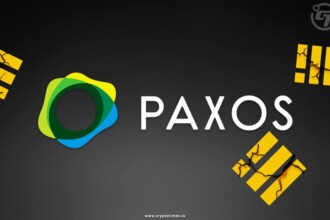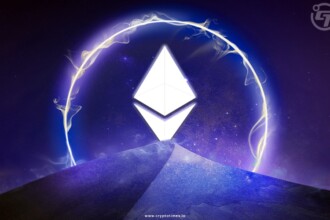The cryptocurrency landscape has always been a dynamic and evolving sector, but the journey through 2022 into 2023 has been particularly emblematic of its volatile nature. The year 2022 was marked by a challenging bear market and intense regulatory scrutiny, shaking the foundations of even the most robust digital assets. However, as we transitioned into 2023, the industry witnessed a remarkable resurgence, fueled by innovations and a renewed sense of optimism.
Amidst this revival, certain projects have stood out for their unique contributions and forward-thinking approaches. Notable among these are Algorand, a pioneer in proof-of-stake networks, XDC Network with its focus on empowering asset transfers, and Bitcoin Spark, a Bitcoin hard fork aiming to offer more utility and tackle centralization issues.
Each of these projects, with their distinct visions and innovative solutions, represents a beacon of promise for the future of cryptocurrencies. As they gain momentum, they not only redefine the capabilities of blockchain technology but also set new standards for what we can expect from digital currencies moving forward.
In this article, we will discuss attributes that next-generation crypto exchanges can offer.
Section 1: The Importance of Education and Engagement
The rising interest in cryptocurrencies among younger generations marks a significant shift in the investment landscape. This demographic is increasingly allocating a larger portion of their portfolios to digital assets, driven by the allure of cryptocurrencies as a hedge against inflation and a means for portfolio diversification.
However, this growing enthusiasm is juxtaposed against a notable gap in public education regarding blockchain and cryptocurrency technologies. The responsibility to bridge this educational gap falls not only on the industry but also on governments.
There is an urgent need to provide comprehensive and accessible educational materials and resources to help users understand the nuances of safe and sustainable investments in this rapidly evolving space.
To this end, a collaborative effort involving workshops, seminars, and online courses could play a crucial role. Furthermore, corporate entities in the crypto space must shoulder their share of responsibility by actively engaging in educational initiatives. This could involve developing tools and resources that demystify digital assets and make the concepts more approachable for the general public.
In essence, enhancing education and engagement in the crypto space is imperative to empower the new wave of investors. By providing the necessary knowledge and skills, industry and government bodies can help navigate new markets and foster a more informed and confident group of cryptocurrency users.
Section 2: User Experience and Gamification
The adoption of cryptocurrency heavily relies on user experience (UX) and ease of use. A positive UX, characterized by intuitive interfaces and straightforward transactions, can significantly lower the barrier to entry for new users. Conversely, complex and confusing platforms may discourage potential adopters.
Gamification is emerging as a powerful tool in crypto exchanges to enhance user engagement. By incorporating elements such as rewards, leaderboards, and challenges, these platforms can transform the trading experience into a more interactive and enjoyable activity. This approach not only makes the learning curve less steep but also fosters a sense of community among users.
Good UX design, coupled with gamification, addresses the critical issue of the lack of public education in crypto. By simplifying complex concepts through engaging and interactive elements, these platforms can effectively educate users about the nuances of cryptocurrency trading and investment. This strategy can lead to increased user engagement and retention, ultimately contributing to the broader adoption of cryptocurrencies.
Section 3: Regulatory Landscape
The year 2023 could be pivotal in shaping the regulatory landscape for cryptocurrencies. Anticipated are intense debates and possible confrontations over proposed regulations that could impact the essence of decentralization in the crypto world. The outcome of these regulatory battles is uncertain but will undoubtedly have significant implications for the operation and evolution of crypto exchanges.
For example, the most controversial and biggest legal battle of SEC Vs. XRP, in which XRP notched a victory against SEC, positively impacted the overall market.
Striking a balance between crypto regulation and innovation remains a central challenge, and the direction of regulatory frameworks will play a crucial role in determining the future landscape of crypto exchanges.
Also Read: 7 Benefits of Crypto Regulations for a Bright Future
Section-4 Transitioning from Speculation to Social Utility in Crypto Projects
Growth of Web3 Platforms
The growth of Web3 platforms is reshaping the crypto exchange landscape. As these platforms evolve, there is a trend towards prioritizing utility over speculation. This shift is expected to lead to the development of more meaningful social platforms and protocols in the Web3 space.
These innovations could include interoperable identity systems, on-chain social graphs, and crypto-abstracted social experiences. The expansion of Web3 platforms, therefore, not only diversifies the range of services offered by crypto exchanges but also integrates them more deeply into social and economic ecosystems.
Shift Towards Utility and Social Experiences
There’s a discernible shift in the focus of crypto projects from mere speculation to utility and meaningful social experiences. This trend reflects a broader movement towards creating value-based, user-centric platforms that offer more than just financial transactions.
By incentivizing positive behaviors and increasing engagement, these platforms aim to promote financial literacy and demonstrate the potential impact of decentralized systems on the global economy. This evolution in the crypto project landscape signifies a maturing market that is increasingly focused on sustainable growth and long-term value creation.
Section 5: Innovations in Crypto Exchanges
In the realm of crypto exchanges, innovations are not just limited to blockchain scalability or smart contract frameworks; they also encompass the practical aspects of trading, such as the seamless conversion from stablecoins like USDT to BTC, enhancing user experience and transaction efficiency The new era of crypto exchanges comes up with many innovations to attract newbies in the crypto space. For example
Algorand’s Blockchain Scalability
Algorand is a standout player in enhancing blockchain scalability. It operates on a proof-of-stake consensus mechanism, which diverges from traditional energy-intensive mining. Validators are selected randomly based on the number of ALGO tokens staked. This method not only reduces energy consumption but also ensures quick transaction validations. Algorand’s approach represents a significant leap forward in addressing scalability issues, a major hurdle in blockchain technology.
XDC Network’s Asset Transfer Empowerment
XDC Network is revolutionizing asset transfers in the crypto world. Its unique variation of the proof-of-stake mechanism accelerates transaction finality and improves scalability. The network’s ability to bridge public and private blockchains through smart contracts opens up a plethora of applications, from supply chain management to financial services. This functionality is crucial in enhancing the interoperability and efficiency of blockchain transactions.
Bitcoin Spark’s Decentralization and Smart Contracts
Bitcoin Spark, a notable Bitcoin hard fork, focuses on decentralization and an advanced smart contract layer. Its smart contract framework, audited by independent firms, supports multiple programming languages, expanding its utility beyond traditional applications. This approach to smart contracts enables a range of applications from DeFi to NFTs, marking a significant advancement in the crypto market’s capabilities.
These innovations are not just technological advancements but also pivotal in shaping the future of crypto exchanges, offering solutions to longstanding challenges and setting new benchmarks for efficiency, scalability, and versatility in the cryptocurrency domain.
Conclusion:
The future of cryptocurrency exchanges is being shaped by a convergence of educational initiatives, improved user experiences, regulatory developments, and technological innovations. As we witness a shift from speculative investments to value-driven utility and meaningful social experiences, the role of platforms like Algorand, XDC Network, and Bitcoin Spark becomes increasingly crucial.
These entities are not only advancing blockchain scalability and asset transfer capabilities but also redefining the landscape of decentralized finance. The successful navigation of this evolving terrain will depend on the collective efforts of governments, industry leaders, and the crypto community to foster an environment conducive to growth, innovation, and responsible adoption. The journey ahead is complex but promising, signaling a new era of maturity and sustainability in the cryptocurrency market.







